Qianqian Zhu
AResNet-ViT: A Hybrid CNN-Transformer Network for Benign and Malignant Breast Nodule Classification in Ultrasound Images
Jul 27, 2024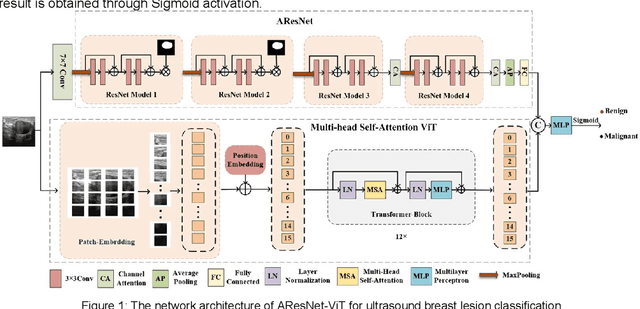
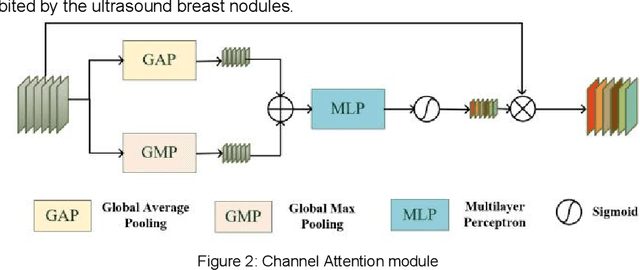

Abstract:To address the challenges of similarity between lesions and surrounding tissues, overlapping appearances of partially benign and malignant nodules, and difficulty in classification, a deep learning network that integrates CNN and Transformer is proposed for the classification of benign and malignant breast lesions in ultrasound images. This network adopts a dual-branch architecture for local-global feature extraction, making full use of the advantages of CNN in extracting local features and the ability of ViT to extract global features to enhance the network's feature extraction capabilities for breast nodules. The local feature extraction branch employs a residual network with multiple attention-guided modules, which can effectively capture the local details and texture features of breast nodules, enhance sensitivity to subtle changes within the nodules, and thus can aid in accurate classification of their benign and malignancy. The global feature extraction branch utilizes the multi-head self-attention ViT network, which can capture the overall shape, boundary, and relationship with surrounding tissues, and thereby enhancing the understanding and modeling of both nodule and global image features. Experimental results on a public ultrasound breast nodule data set show that the proposed method is better than other comparison networks, This indicates that the fusion of CNN and Transformer networks can effectively improve the performance of the classification model and provide a powerful solution for the benign-malignant classification of ultrasound breast.
Rapid and Accurate Diagnosis of Acute Aortic Syndrome using Non-contrast CT: A Large-scale, Retrospective, Multi-center and AI-based Study
Jun 25, 2024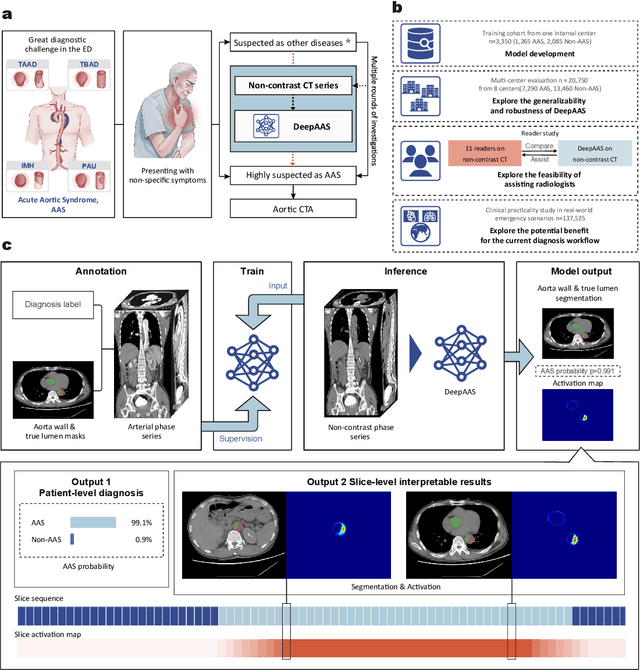
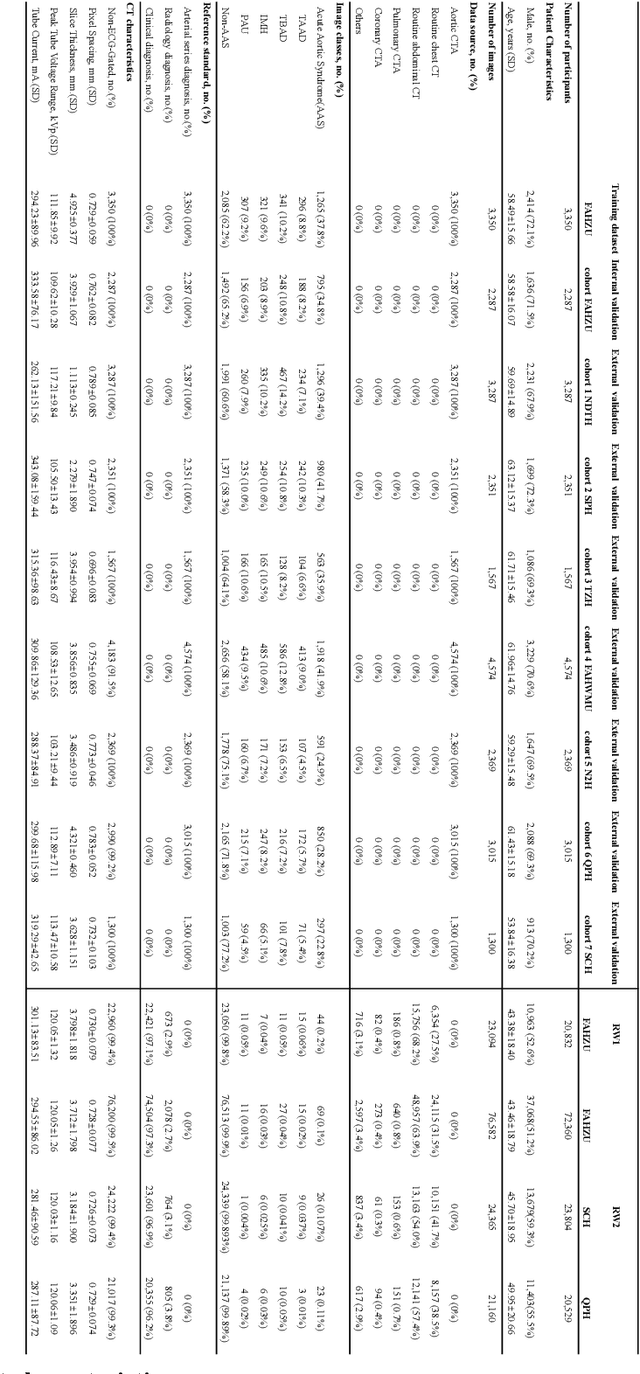
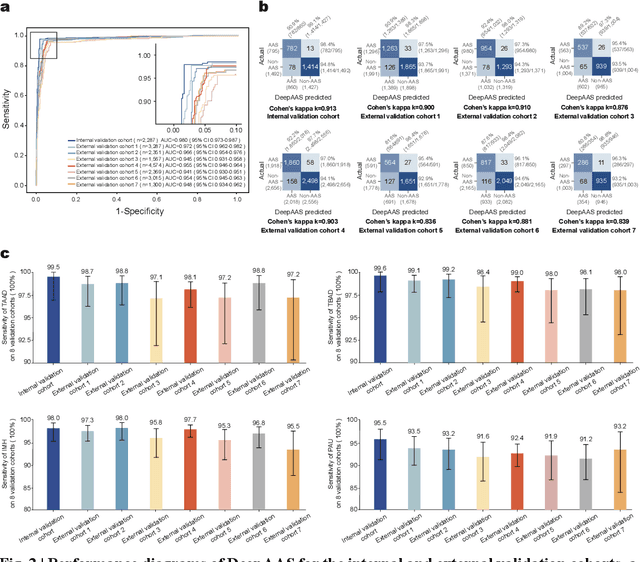
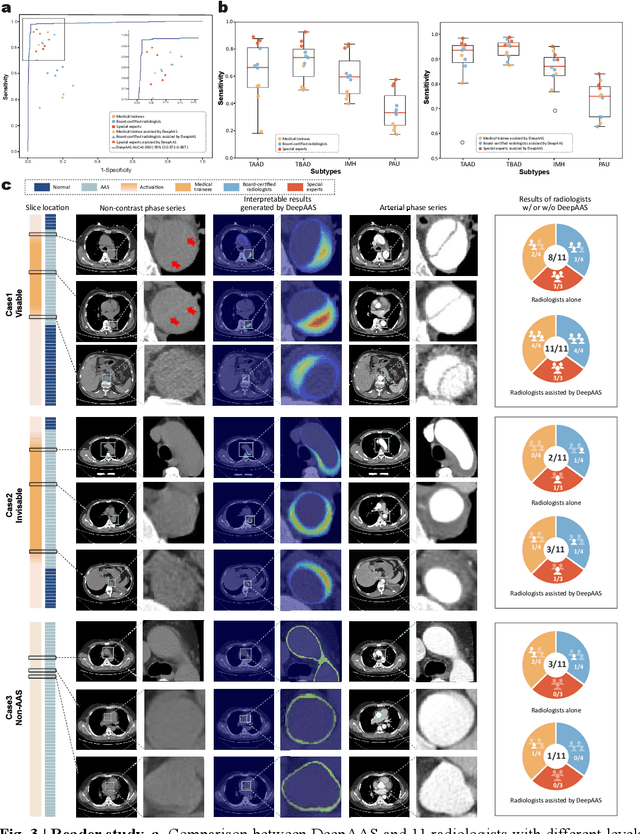
Abstract:Chest pain symptoms are highly prevalent in emergency departments (EDs), where acute aortic syndrome (AAS) is a catastrophic cardiovascular emergency with a high fatality rate, especially when timely and accurate treatment is not administered. However, current triage practices in the ED can cause up to approximately half of patients with AAS to have an initially missed diagnosis or be misdiagnosed as having other acute chest pain conditions. Subsequently, these AAS patients will undergo clinically inaccurate or suboptimal differential diagnosis. Fortunately, even under these suboptimal protocols, nearly all these patients underwent non-contrast CT covering the aorta anatomy at the early stage of differential diagnosis. In this study, we developed an artificial intelligence model (DeepAAS) using non-contrast CT, which is highly accurate for identifying AAS and provides interpretable results to assist in clinical decision-making. Performance was assessed in two major phases: a multi-center retrospective study (n = 20,750) and an exploration in real-world emergency scenarios (n = 137,525). In the multi-center cohort, DeepAAS achieved a mean area under the receiver operating characteristic curve of 0.958 (95% CI 0.950-0.967). In the real-world cohort, DeepAAS detected 109 AAS patients with misguided initial suspicion, achieving 92.6% (95% CI 76.2%-97.5%) in mean sensitivity and 99.2% (95% CI 99.1%-99.3%) in mean specificity. Our AI model performed well on non-contrast CT at all applicable early stages of differential diagnosis workflows, effectively reduced the overall missed diagnosis and misdiagnosis rate from 48.8% to 4.8% and shortened the diagnosis time for patients with misguided initial suspicion from an average of 681.8 (74-11,820) mins to 68.5 (23-195) mins. DeepAAS could effectively fill the gap in the current clinical workflow without requiring additional tests.
Multichannel consecutive data cross-extraction with 1DCNN-attention for diagnosis of power transformer
Oct 11, 2023Abstract:Power transformer plays a critical role in grid infrastructure, and its diagnosis is paramount for maintaining stable operation. However, the current methods for transformer diagnosis focus on discrete dissolved gas analysis, neglecting deep feature extraction of multichannel consecutive data. The unutilized sequential data contains the significant temporal information reflecting the transformer condition. In light of this, the structure of multichannel consecutive data cross-extraction (MCDC) is proposed in this article in order to comprehensively exploit the intrinsic characteristic and evaluate the states of transformer. Moreover, for the better accommodation in scenario of transformer diagnosis, one dimensional convolution neural network attention (1DCNN-attention) mechanism is introduced and offers a more efficient solution given the simplified spatial complexity. Finally, the effectiveness of MCDC and the superior generalization ability, compared with other algorithms, are validated in experiments conducted on a dataset collected from real operation cases of power transformer. Additionally, the better stability of 1DCNN-attention has also been certified.
 Add to Chrome
Add to Chrome Add to Firefox
Add to Firefox Add to Edge
Add to Edge